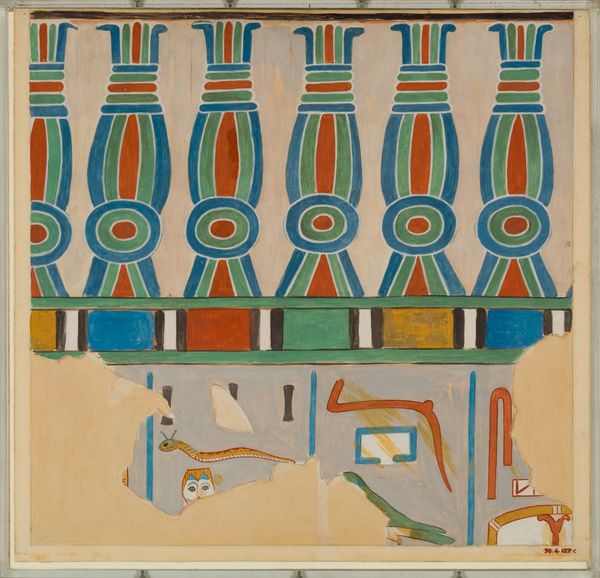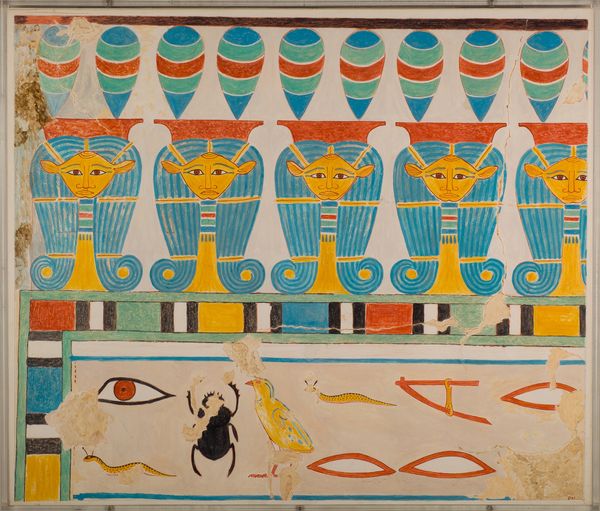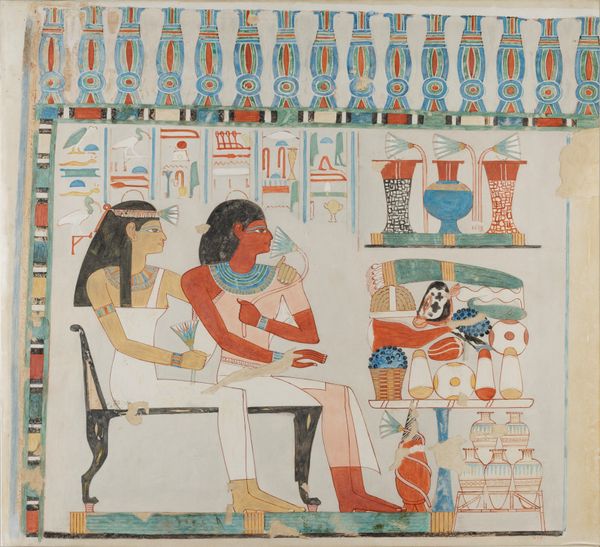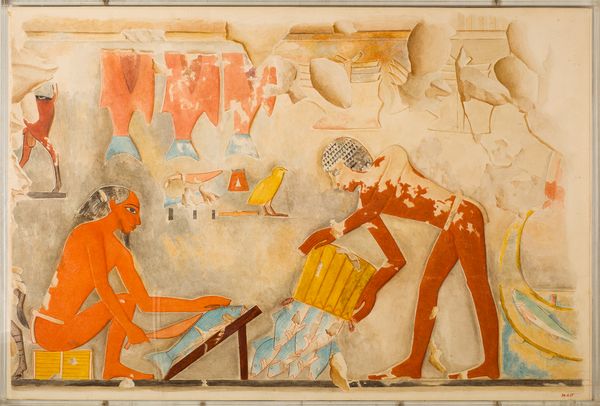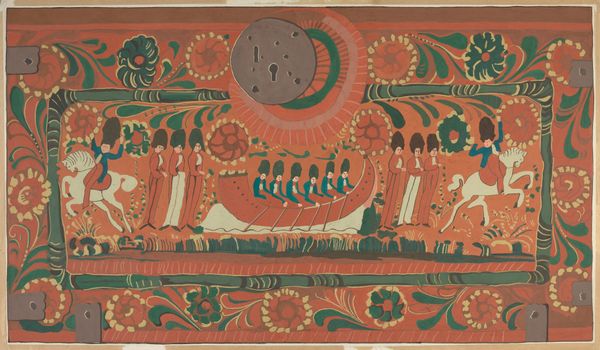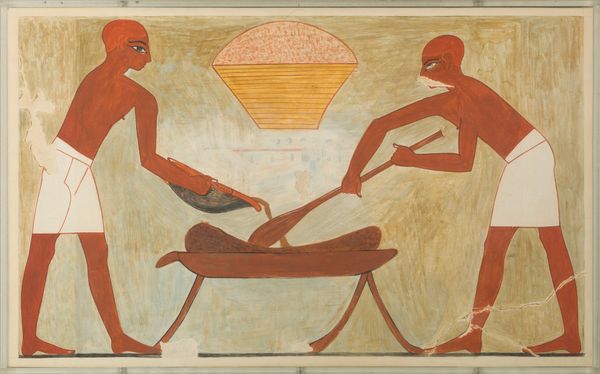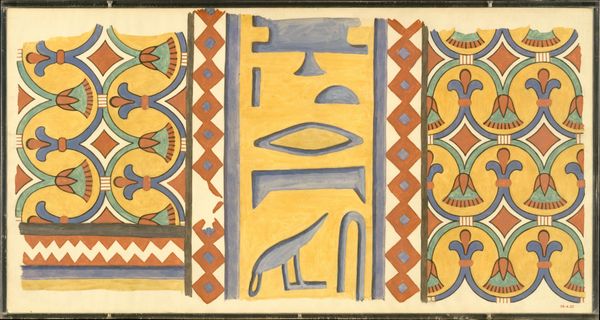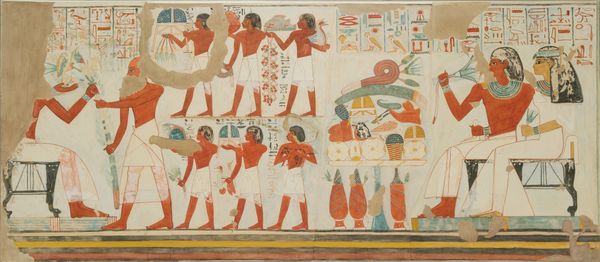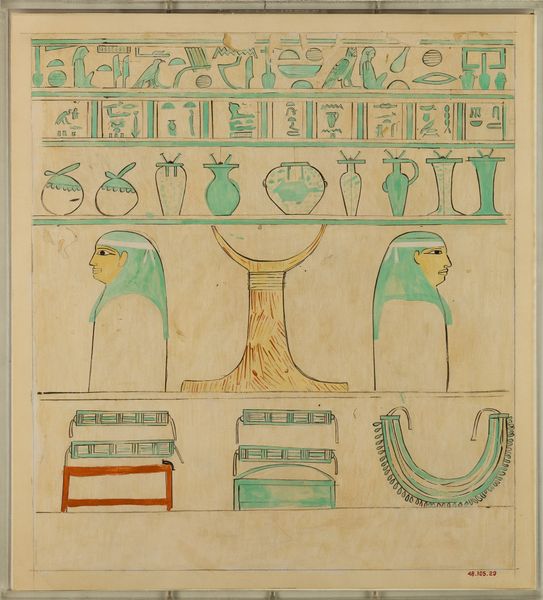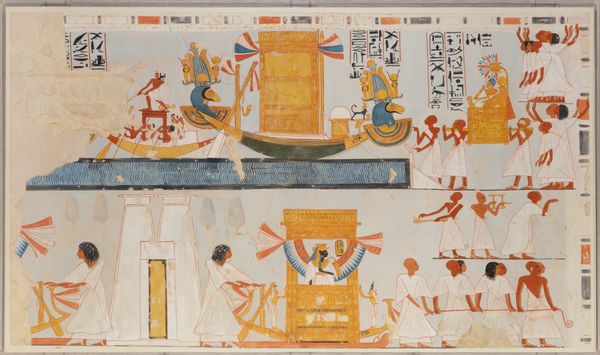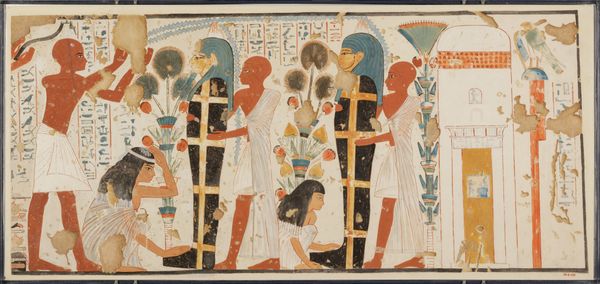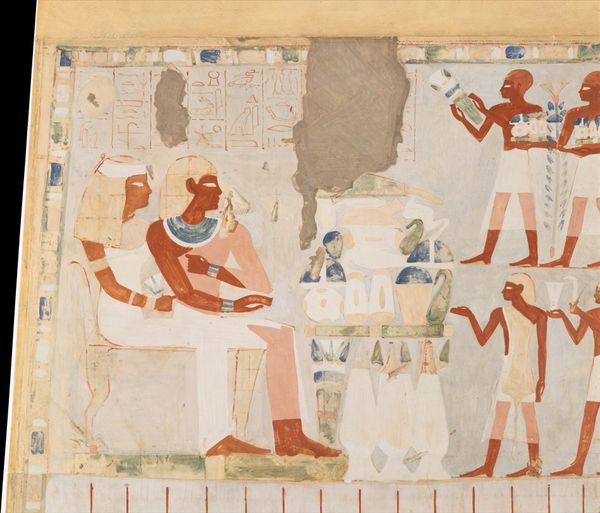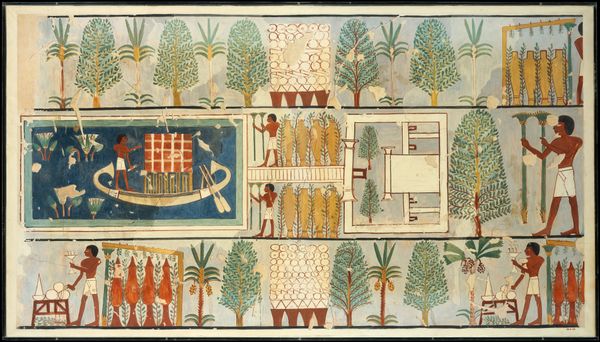
tempera, painting, fresco, mural
#
narrative-art
#
tempera
#
painting
#
ancient-egyptian-art
#
figuration
#
fresco
#
egypt
#
geometric
#
line
#
wall painting
#
history-painting
#
mural
Dimensions: Framed: h. 13 1/4 in; w. 13 7/8 in
Copyright: Public Domain
Editor: Here we have what's called the Kheker Friese, found in the Tomb of Tjay. It’s a painting from around 1550 BC. I’m struck by the geometric quality of the whole piece – almost like a repeated motif or ornamentation. What do you see in this piece? Curator: Well, you're spot on about the geometric quality. It sings, doesn't it? For me, Egyptian art is less about observation and more about a feeling for a very old world. Notice how it’s both decorative and narrative – that combination speaks to the purpose these images served, as powerful spells in the afterlife. How about you; are the colors affecting you? Editor: Yes, actually! I didn’t consciously register that it *felt* old, but now that you mention it, there is something about the muted reds and blues. So, how did they achieve such enduring colors back then? Curator: They primarily used mineral pigments like azurite for blues, ochre for reds and yellows, and malachite for greens. All incredibly resilient materials. It is a fresco painting as well, so those mineral pigments would be mixed with a binder such as plaster, which is also fairly tough. Amazing. Isn't it something, that after all these millennia, we’re still having a natter about it? Editor: It really is incredible! Thanks so much for your insight. I’m going to go look closer at those blues. Curator: Do, and see what they whisper to you. Art is a conversation across time, after all.
Comments
No comments
Be the first to comment and join the conversation on the ultimate creative platform.
